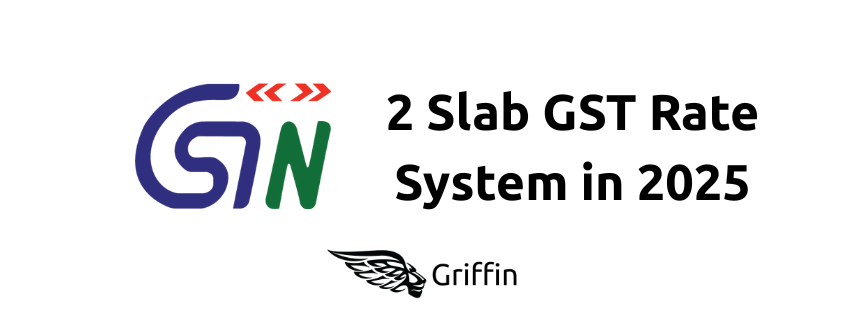Major GST Reform: 2 Slab GST Rate System in 2025
- Griffin Research Team

- Aug 23
- 3 min read

Introduction
In 2025, the Government of India has unveiled a landmark proposal to overhaul the Goods and Services Tax (GST) regime, aiming to move from the current complex multi-tier system to a simplified 2 slab structure. This reform is designed to enhance ease of doing business, reduce disputes, rationalize rates, and boost economic activity and consumption.
The Thought Process Behind the 2-Slab GST Proposal
The two-slab GST system is a response to several ongoing challenges under the current four-rate structure (5%, 12%, 18%, 28%):
Complexity and Classification Disputes: The multi-slab system often leads to confusion and legal battles over the correct classification of goods and services.
Inverted Duty Structures: Some sectors suffer from situations where taxes on raw materials are higher than those on finished goods, creating working capital and refund bottlenecks.
Objective of Rationalization: By consolidating rates, policymakers aim to simplify compliance, reduce litigation, and provide long-term stability for businesses.
Boosting Consumption: Lower taxes on everyday and aspirational goods are expected to make products more affordable and increase consumer spending.
Global Competitiveness: A simpler GST regime aligns India with international practices and supports exports.
The finance ministry’s stated intention is to “rationalise tax rates, benefit citizens—including women, students, the middle class, and farmers—reduce disputes, correct inverted duty structures, and improve ease of doing business, boosting key sectors and economic growth.”
Proposed GST Rates in the New Slab System
The 2025 GST proposal suggests three main components:
Two Principal Slabs:
5% "Merit" rate: Most essential and common-use items
18% "Standard" rate: Most other goods and services, including many currently taxed at 12%, 18%, or 28%
Special 40% Rate: For luxury and sin goods (like tobacco), affecting just 5-7 products. The overall tax on these goods (especially tobacco) will ensure the current tax incidence remains unchanged.
Restructuring Details:
About 99% of items currently taxed at 12% are expected to shift down to 5%
Nearly 90% of items taxed at 28% to move down to 18%
High labor-intensive and export-oriented sectors (e.g., diamonds, precious stones) and petroleum products: Special or existing rate regimes will continue.
Item Category Old Rate (2025) Proposed New Rate
Essential/Daily-Use Items 12% 5%
Standard Goods & Services 18%, 28% 18%
Luxury & Sin Goods (e.g., tobacco) 28%+cess 40%
Acceptance Prospects by the GST Council
Decision Process:
The Centre has submitted its proposal to the Group of Ministers (GoM) of the GST Council.
Shifting to two slabs will require broad support, as the GST Council includes representatives from all states and Union Territories.
Factors that Enhance Likelihood of Acceptance:
The GoM and Council have previously engaged in extensive item-by-item reviews, and there is momentum for simplification.
Rationalizing the structure is generally seen as beneficial for reducing compliance burdens for both taxpayers and administrators.
Certain political signals are positive:The Prime Minister has publicly committed to the reforms being in place by Diwali 2025.
Potential Bottlenecks:
States that are major revenue gainers from higher slabs (like those on sin/luxury goods) may seek compensation.
Sectors with special rates or those losing concessions may lobby for exceptions.
Some states may resist if projected fiscal revenues decline.
Overall Likelihood: As of mid-August 2025, government sources and major media characterize Council acceptance as highly probable, given broad benefits and central-state consultations, but some fine-tuning or phased implementation is possible to address sector-specific and state revenue concerns.
Conclusion
The proposed two-slab GST regime (5% and 18%, with a 40% special rate for select luxury/sin goods) marks a significant policy shift designed to simplify tax compliance, stimulate consumption, and support economic growth. While stakeholder negotiations and compensation adjustments are inevitable, political commitments and extensive government consultations position this reform as likely to be adopted by the GST Council in 2025.
_edited.jpg)


Comments